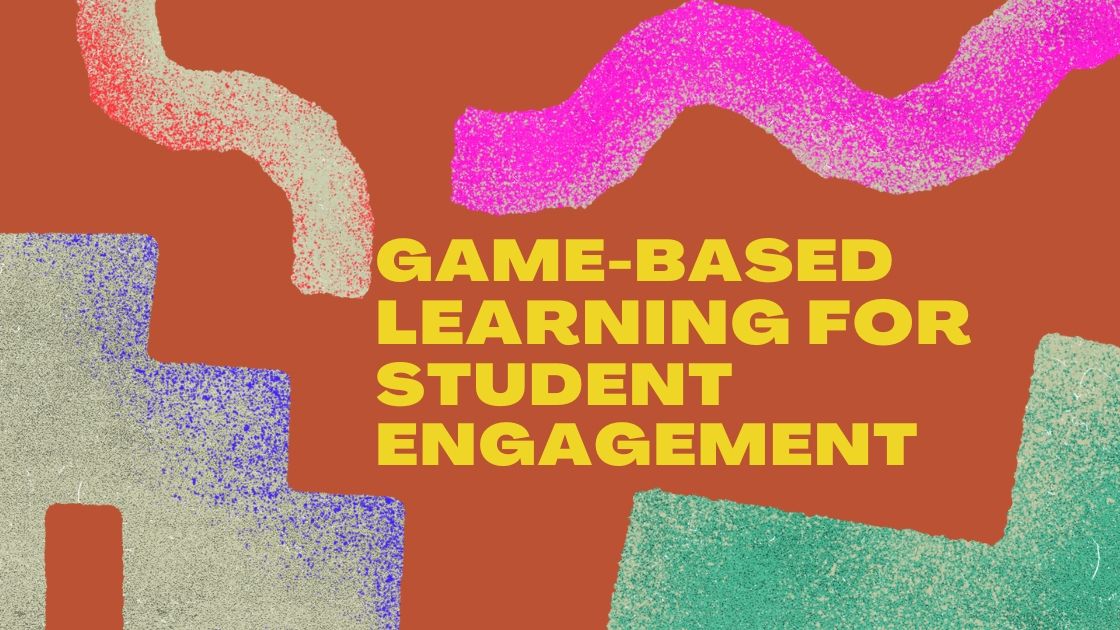The benefits of using game-based teaching include enhanced retention and recall rate. Learners build stronger problem-solving skills, and the teacher gets instant feedback. Educators should understand strategies for choosing relevant games for teaching. The games should be customizable, engaging, purposeful, and easy to use. There should be a concrete implementation plan to avoid deviating from the syllabus.
What is game-based learning?
Game-based learning can be applied at any educational level. It ranges from simple concepts or sentence memorization to high-level and complex outcomes. The strategy is gaining popularity because it is helping learners achieve learning objectives fast. Game-based learning is an educational approach where teachers use games to elaborate concepts and foster learning outcomes.
Educators use educational games with engaging content that produce instant rewards and boost healthy competition among students. The main advantage of game-based learning is that every learner benefits regardless of the education level they are in. In a game-based learning environment, the attributes and concepts of the game are firmly intertwined within the learning activities.
Teachers need to choose a properly working computer to implement game-based learning effectively. Before installing any game-based application for your class, make sure that your device has enough application memory. Inform your students to make sure their devices have enough memory too. It can be frustrating to realize your system ran out of memory when you are in the middle of a lesson. Having enough memory will ensure smooth application operations and prevent the learning process from collapsing.
The difference between gamification and game-based learning
Teachers and learners often confuse gamification and game-based learning. The two are entirely different regarding their goals, outcomes, and implementation strategy. Both are valuable tools to boost classroom collaboration, although their concepts differ in multiple ways.
Definition
Gamification is the application of game mechanics and strategies to keep learners engaged and motivated to achieve learning goals. In game-based learning, students investigate the various aspects of a game within a learning context developed by educators.
Key features
In gamification, the entire learning process focuses on the game. The teacher applies every element and mechanic of the game within the topic to keep the classroom motivated and engaged. The use of the game may not have a predetermined learning goal, but it may come with rewards. Gamification uses principles such as rewards, feedback loops, leaderboards, and points. Its implementation is easier and cheaper.
In game-based learning, content is developed with the story and game scenes in mind. The game is embedded within the learning process to capture learners' attention in a suitable remote environment that they are used to. It aims to teach specific skills or achieve predetermined learning goals. Implementing game-based learning is costly and harder.
The benefits of game-based learning for students' engagement
Games for use in a game-based learning environment should be well-designed. Teachers should prepare in advance the supporting materials for use by students. The educator should also consider using the latest productivity tips to help students stay focused and avoid distractions. Game-based learning provides both the teacher and the student with various benefits.
- Improved recall and retention: Traditional teaching methods achieve limited retention rates. When combined with game-based teaching, students understand better.
- Instant feedback: The usual way of testing if learners understand a lesson is to give them a test. In game-based learning, a teacher can discern if students understood the lesson immediately.
- Enhanced problem-solving skills: Playing games requires learners to think critically to solve problems. Learners become better at solving problems when they get used to game-based learning.
- Fluency in computer and simulation: Students learn how to use computers and develop skills in game-based learning. They learn the importance of online security, the use of passwords, and the tricks of using the keyboard. They learn to use and benefit from tools such as Markup Hero that can help them communicate better, collaborate, and stay organized. It can be used to take screenshots, upload images, and for annotation.
Strategies for implementing game-based learning
Create a concrete plan
Game-based learning should be embedded within the coursework. Its implementation requires a concrete plan. Decide the approach you will use to introduce it to your students. For example, you may set aside specific days to use games in teaching. Another example is to use traditional teaching in part of the lesson and games in another. Decide whether you will involve parents or give students game-based homework to complete at home.
Test and learn
Before using games in a classroom lesson, play the game to determine how effective it will be for the students. Test to understand how you will introduce your lesson based on the game. Let the students explore the game, too, and record the scenarios they encounter. For example, you can use a role-playing game to help your learners explore various perspectives in a bigger and more holistic way. Use, for example, a game about wildlife adventure to help students learn the importance of protecting endangered species. Understanding how to softlaunch a game is crucial for testing it in real-world scenarios, gathering user feedback, and refining the gameplay to enhance educational outcomes before a full-scale release.
Try Markup Hero
Ready to make amazing graphics and annotated visuals?
Start using Markup Hero to take screenshots, annotate images and PDF's and become a world-class digital educator. Signup For Free
Choose a format that works for you and your students
You must choose a game students will love. Decide whether it is best to use smartphones or computers. Digital games can work better for your students, although non-digital games will still work. The aim is to get your students eager to learn and participate in the game. For example, games that require a collaborative approach produce a more significant impact. It helps build their social and interpersonal skills. Some students may prefer working alone, and you must consider them too.
Customize the games based on student needs
The purpose of game-based learning is to provide students with a personalized learning experience. Customized games help learners pay closer attention to the topic, and it drives engagement. For example, you may use an avatar or character representing a particular student. Another option is to use templates to create customized game content.

Choose games based on the learning goals
Let the games you use meet the goals you intend to achieve. For example, your goal might be to offer intervention to slow learners. Let the game offer a solution that helps the learner understand better. Another example is game-based learning for reinforcement purposes. You may choose a game to promote collaboration to meet this purpose.
Use game elements that motivate students
Your main goal is for your students to understand a topic at a higher level. Focus on motivating your learners to play more by being selective about the game elements you use. For example, offer rewards to top achievers to encourage the rest to work harder. Other elements like collectibles, budges, and avatars are good motivators.
Work in teams
It’s okay to let the students play alone, but teamwork can produce better outcomes. Teamwork promotes collaboration, cooperation, and stronger relationships among students. Multiplayer video games will work well for this goal. Allow your students to debate, interact, and respond to various questions and requirements. Divide them into small, manageable groups.
Conclusion
Game-based learning provides an excellent way for learners to improve their creativity, problem-solving skills, and critical thinking. The teacher needs to develop proper strategies for implementing game-based learning. They should give students the freedom to develop solutions and ideas and improve their creativity. Its implementation requires choosing the right gadgets, games, and personalization to achieve maximum outcomes.


